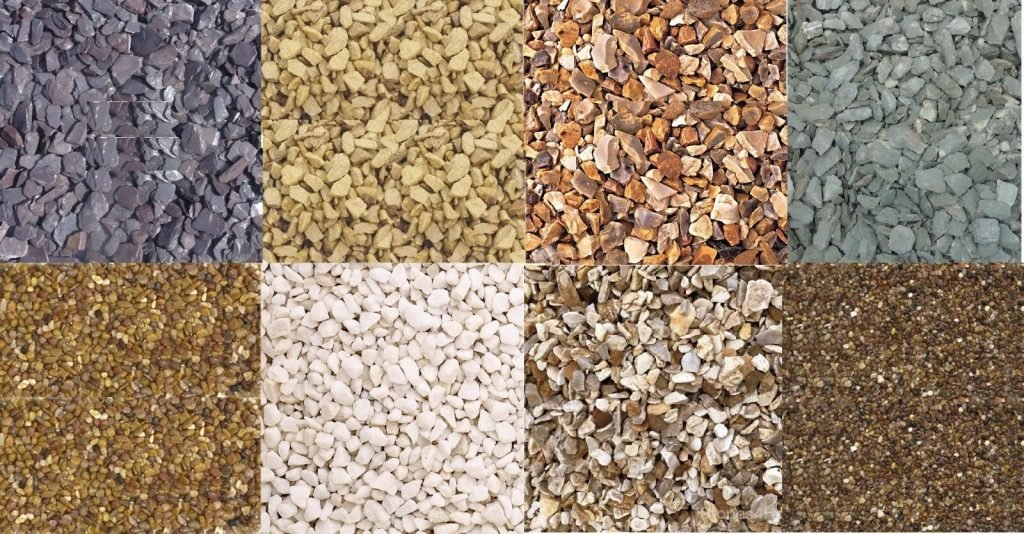In the world of landscaping and garden design, decorative aggregates are a versatile and attractive solution for transforming outdoor spaces. Whether you’re a homeowner looking to enhance your garden or a professional landscaper designing a new outdoor project, decorative aggregates offer endless possibilities. From gravel and pebbles to slate and crushed stone, these materials combine functionality with visual appeal, making them a favorite choice for both modern and traditional garden designs.
In this article, we’ll explore what decorative aggregate are, their benefits, popular types, and creative ways to use them in your next landscaping project.
What Are Decorative Aggregates?
Decorative are a range of naturally sourced materials like stones, gravel, chippings, and pebbles used primarily for aesthetic purposes in landscaping. They come in various colors, shapes, sizes, and textures, providing flexibility for all kinds of outdoor applications.
Unlike standard building aggregates that serve structural functions (like sand or ballast), decorative aggregates are chosen for their visual appeal and low-maintenance qualities. They are used in gardens, driveways, paths, borders, rockeries, ponds, and even rooftop gardens.
Benefits of Using Decorative Aggregates
1. Low Maintenance:
Once installed, decoration aggregates require minimal upkeep. They don’t need watering, mowing, or trimming, making them ideal for low-maintenance gardens.
2. Weed Suppression:
When laid over a weed membrane, aggregates form an effective barrier that helps reduce weed growth, keeping your garden neat and clean.
3. Cost-Effective:
Compared to paving or decking, decorative aggregates are a more budget-friendly solution for covering large areas.
4. Drainage Improvement:
Gravel and other porous aggregates allow water to drain through easily, reducing waterlogging in gardens and paths.
5. Aesthetic Versatility:
Available in a range of textures and colors, aggregates can suit any design theme—from rustic countryside gardens to sleek modern spaces.
6. Eco-Friendly Option:
Many aggregates are natural and locally sourced, reducing transportation emissions and environmental impact. Some are even recycled from construction waste, making them a sustainable choice.
Popular Types of Decorative Aggregates
Here are some common types of decorative aggregates used in landscaping:
• Pea Gravel:
Small, rounded stones that come in neutral tones like grey, cream, and brown. Ideal for pathways, play areas, and driveways.
• Crushed Stone:
Available in various sizes and colors, crushed stone is often used for driveways and garden paths due to its durability and angular texture.
• Slate Chippings:
With shades like plum, green, and blue, slate chippings add a touch of elegance. They’re perfect for borders, water features, and mulching.
• Marble Chips:
These white or light-colored stones are ideal for creating a clean, bright look in decorative beds and modern garden designs.
• Cobbles and Pebbles:
Larger and more rounded than gravel, cobbles and pebbles are great for garden borders, pond edges, and Zen gardens.
• Recycled Aggregates:
Made from crushed bricks, tiles, and concrete, these eco-friendly options are perfect for sustainable landscaping projects.
Creative Ways to Use Decorative Aggregates
1. Garden Pathways
Decorative gravel or slate can be used to create attractive, easy-to-maintain walkways through gardens. Choose contrasting colors to highlight the path and frame it with bricks or timber edging for definition.
2. Driveways
Crushed stone and pea gravel are durable enough to handle vehicular traffic while adding curb appeal. Using decorative aggregates in driveways also improves water drainage.
3. Mulching
Instead of bark, use slate chippings or pebbles as mulch around trees and plants. They help retain moisture, suppress weeds, and give beds a polished look.
4. Rock Gardens and Borders
Create visually striking borders or rockeries using a mix of cobbles, pebbles, and crushed stones. Add some drought-tolerant plants like succulents or alpine flowers to complement the stones.
5. Water Features
Aggregates like pebbles and slate work beautifully around ponds, fountains, or dry river beds. They give a natural, serene look and prevent soil erosion around the water’s edge.
6. Patio and Seating Areas
Decorative stones can be used in place of concrete or paving slabs for patios. Use with outdoor furniture, fire pits, or even pergolas to create a cozy retreat.
7. Zen and Japanese Gardens
Gravel and fine pebbles are essential for creating peaceful Zen spaces. Rake patterns into the gravel for a traditional and calming effect.
Tips for Choosing the Right Decorative Aggregate
-
Match your garden style: For modern designs, choose monochrome colors like black or white. For rustic or cottage-style gardens, go for natural tones like brown or grey.
-
Consider size and texture: Finer gravel is great for footpaths, while larger stones work best in borders or as a feature.
-
Use weed membranes: Always install a weed-suppressing fabric before laying aggregates to reduce future maintenance.
-
Buy in bulk: For large areas, ordering in bulk can save money and ensure color consistency.
Conclusion
Decorative aggregates are more than just an aesthetic addition—they are functional, affordable, and versatile materials that can completely transform your outdoor space. Whether you’re sprucing up a small garden or designing a professional landscape, there’s a decorative aggregate to suit every need and taste.
From improving drainage to suppressing weeds and adding curb appeal, the benefits are plentiful. So if you’re planning your next outdoor project, don’t overlook the power of decorative aggregates—they might just be the finishing touch that brings your entire design to life.
